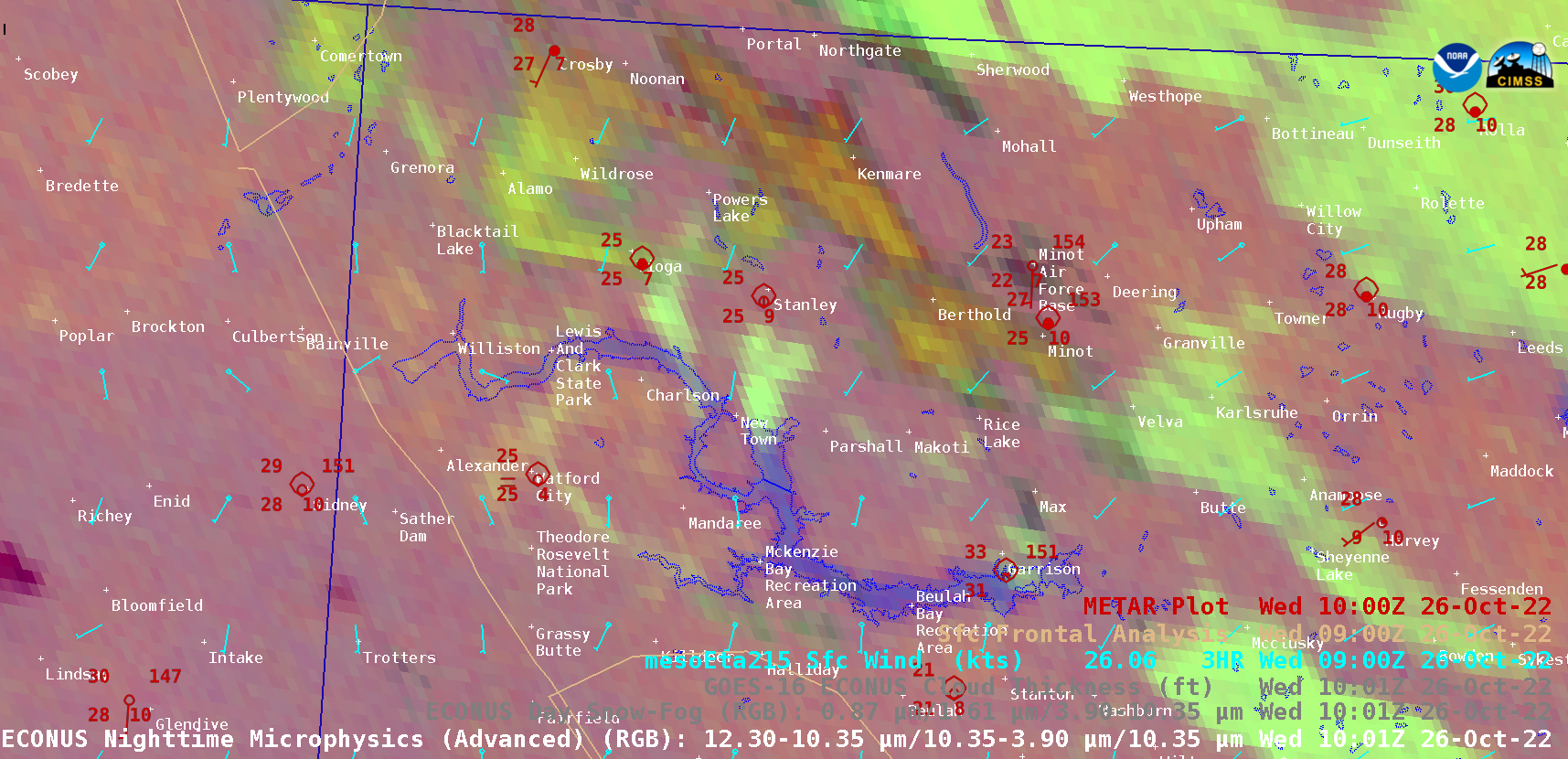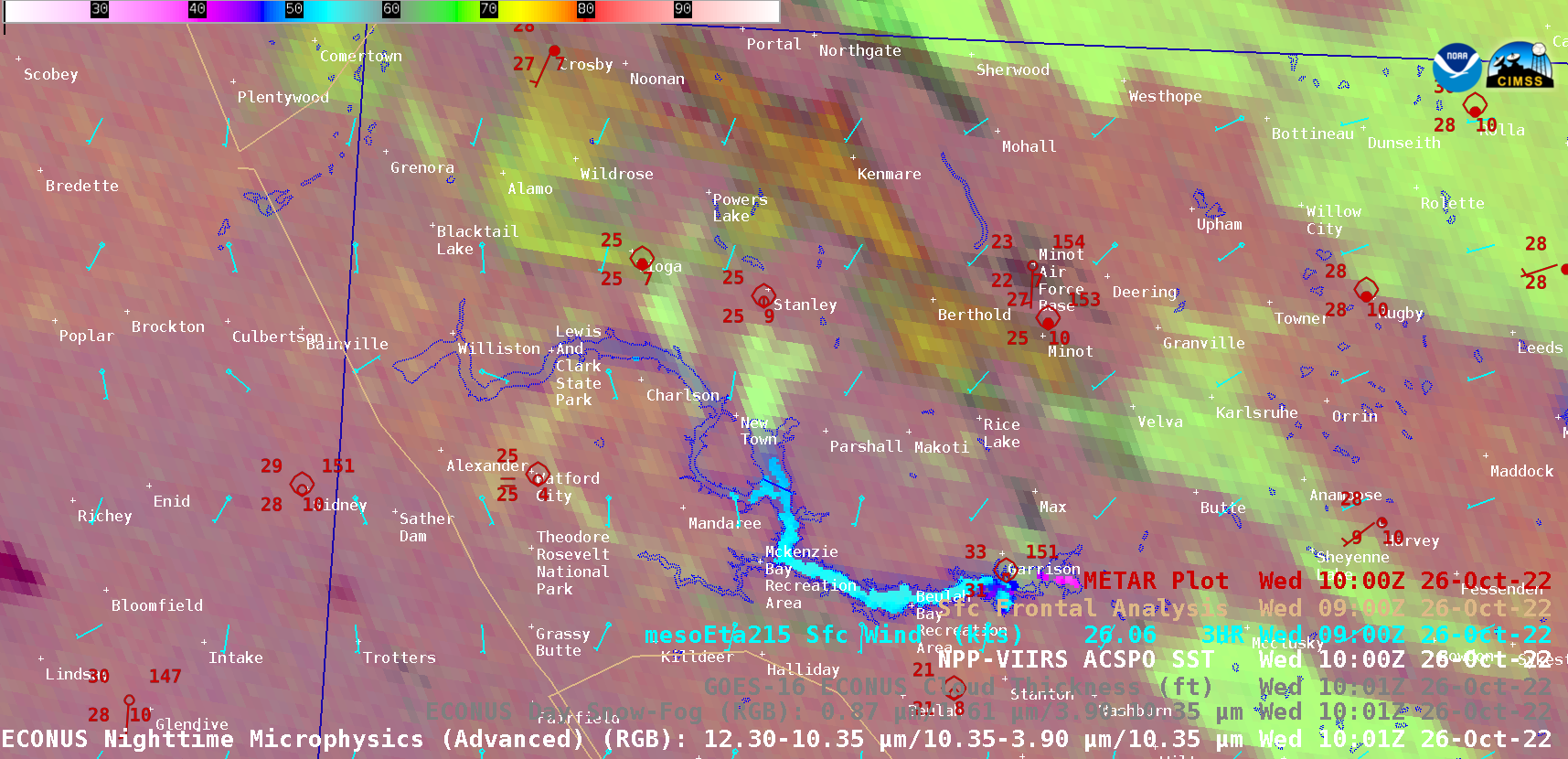Lake effect fog/stratus in North Dakota

GOES-16 Nighttime Microphysics RGB and Day Snow-Fog RGB images [click to play animated GIF | MP4]
The GOES-16 Nighttime Microphysics RGB image at 1001 UTC (below) includes an overlay of NOAA-20 VIIRS Sea Surface Temperature (SST) — the southerly flow of cold air (in the 20s F) across Lake Sakakawea’s SST values of 50-54ºF (shades of cyan) helped to create the lake effect fog/stratus features.


